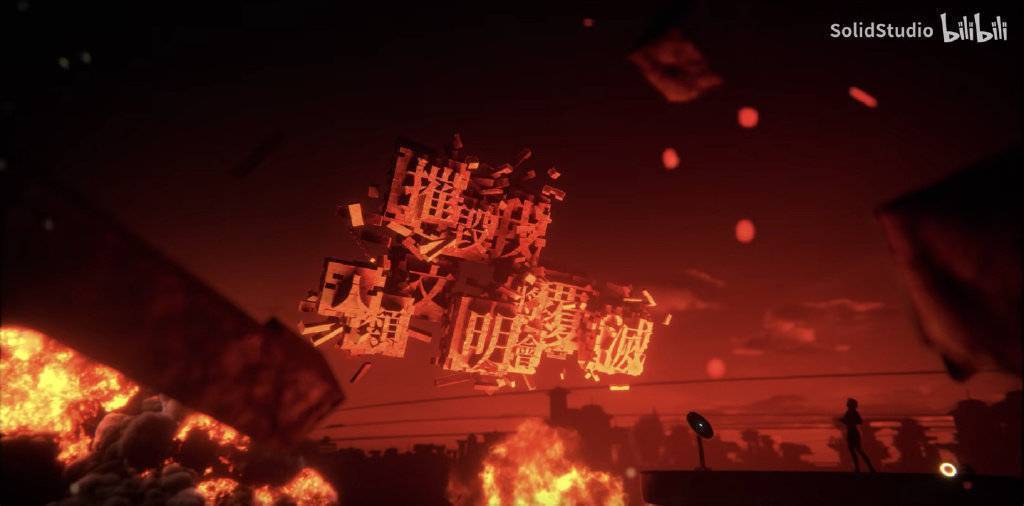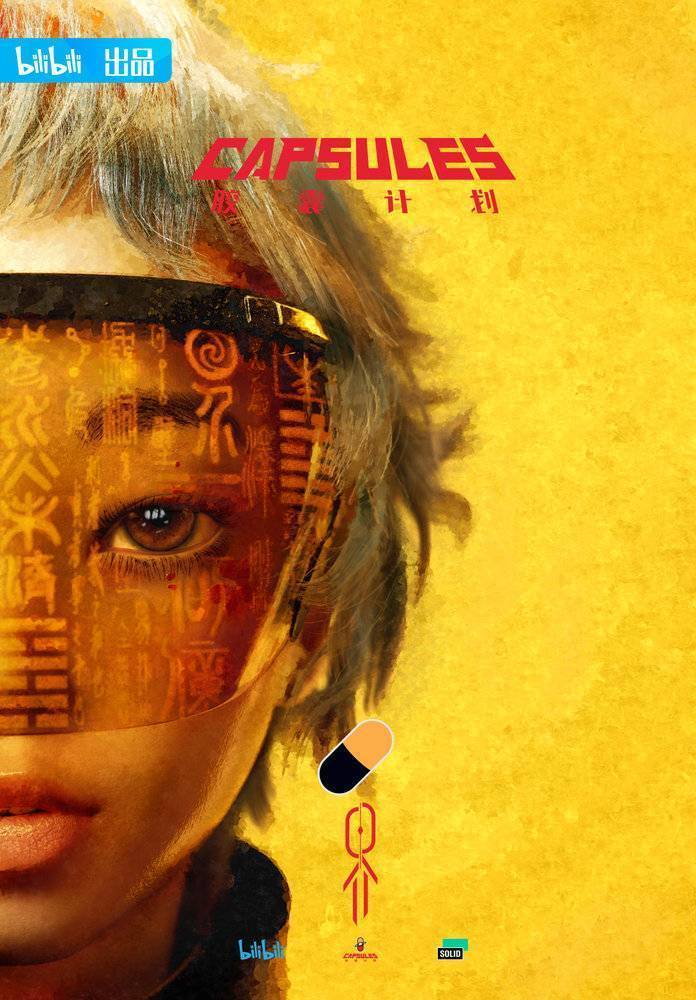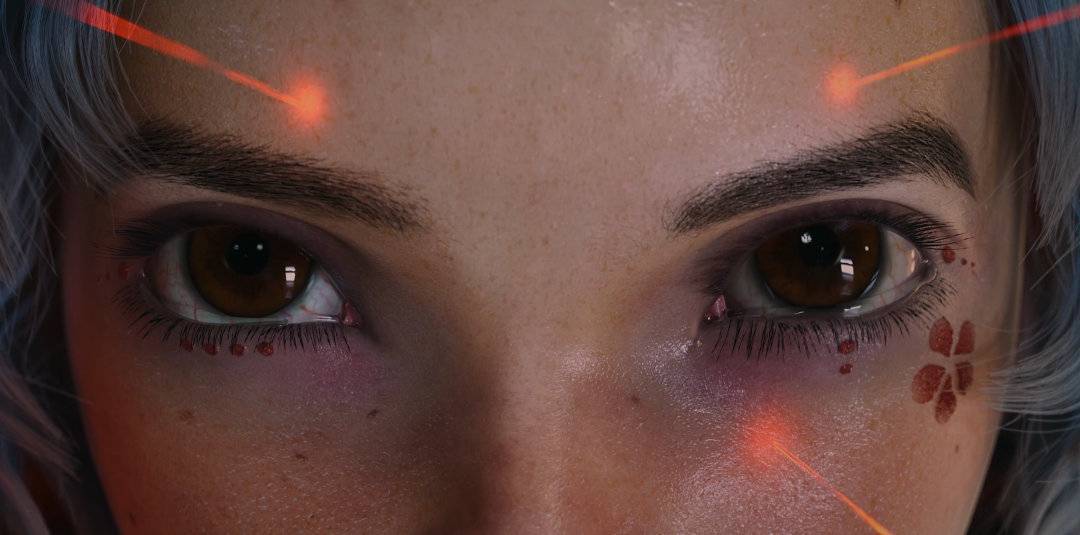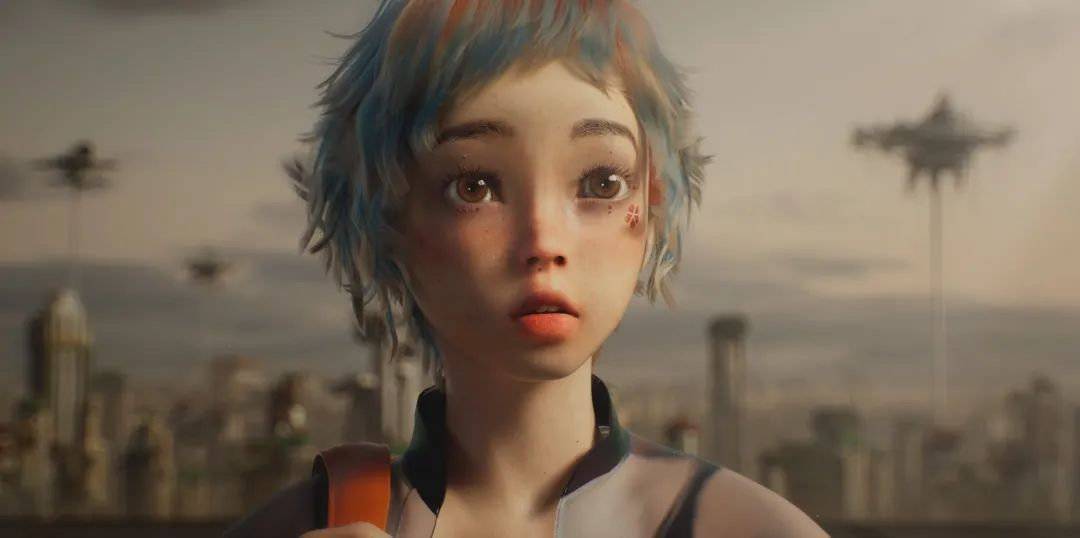If you have the opportunity to become the “God” of all living beings, you can dominate the world, make the world bow your head and become a minister, and all things in the world will treat you like a god. How would you choose? So if the price of becoming a “god” is to help the system open up the era of artificial intelligence leading humans, what choice will you make?
Fortunately, you don’t have to face such a fateful decision. But in the animation work “The World“, Li Wei, an intern in an artificial intelligence research and development organization, faced the life and death coercion of the “cardinal”, the center of the artificial intelligence system, she could choose to become a “god” above ten thousand people; otherwise , she can also pick up the electromagnetic pulse pen in her hand and completely destroy the system, but the moment the pen tip falls, she will also become a vegetable…
In desperation, where can we find life? As one of the most-played animations in the “Capsule Project” series initiated by Bilibili (hereinafter referred to as “Bilibili”), “Jie” takes less than 10 minutes to describe a future world artificial intelligence experiment and discuss the boundary between technological intelligence and human morality.
“Actually, in domestic sci-fi film and television works, there are relatively few themes that discuss human nature. Therefore, this has become a direction for us to create.” In an exclusive interview with Cover News, director Zhu Xiaopeng talked about the creation of works. Bits behind. Although it is an animated short film of less than 10 minutes, it took him and his team 14 months of creative cycle, which shows the huge workload.
In the central space of the huge and empty artificial intelligence system, when the intern Li Wei faced the pressure of the system, the central “cardinal” of the system was like a block of movable type printing, constantly changing postures in the air and combining into different shapes. The glyphs of the character ask the heroine to ask questions, and coupled with the background music with a strong sense of urgency, the suffocation and tension created by the work come from the sight and hearing, which stimulates the nerve endings of the audience frantically.
If you look closely, you will find that there are more marks unique to oriental culture in the space created in the picture. For example, when the female protagonist Li Wei’s thoughts were in chaos, the “Book of Changes” hexagrams kept flashing in her mind; the several drones “Jinwu” around her were like the eyes of a monitor. The icy camera is exposed in the twisting transformation; the electromagnetic pulse pen that can destroy the artificial intelligence system in the heroine’s hand, the hairpin looks like the hairpin of ancient women… and so on, the details are too numerous to enumerate.
“When we first conceived the work, we made up our minds to follow the Chinese style.” Zhu Xiaopeng said that as a sci-fi animation that discusses artificial intelligence, it is easy to enter the path of homogeneity and fall into the same path as the previous work. re-creation. “I remember that during the discussion, one of our main creators, Chen Zhuan, said inadvertently: ‘What we want to do is to make science fiction that belongs to China’.” Therefore, doing science fiction with Chinese style established the creative style of the work “Jie”. and the way to go.
Drone “Golden Go”
“Being Chinese-style sci-fi” seems to be a loud slogan, but when it falls into the work, it would be a bit far-fetched if it is just a visual stack of traditional Chinese elements. Zhu Xiaopeng also mentioned this point. He and the team were reluctant to show some “Chinese style” elements only in the visual design. “I think it is necessary to integrate the thinking of traditional Chinese culture from the core of the story of the work.” After thinking about it, Zhu Xiaopeng thought of “Book of Changes”.
“First of all, the sixty-four hexagrams in the “Book of Changes” actually use binary. Today’s computer language also uses binary.” Second, Zhu Xiaopeng said that in a discussion on the development of artificial intelligence technology and human morality Among the science fiction works, the philosophical thinking brought by the ancient Chinese Taoist culture seems to be the most suitable. “Taoist culture follows all things and advocates obedience to nature. As a part of nature, does the artificial intelligence created by human beings belong to ‘nature’? We also raised such a question.” It also corresponds to Laozi’s philosophical thought that “Tao gives birth to one, one gives birth to two, two gives birth to three, and three gives birth to all things”.

Referring to the text deformation process of movable type printing
There is also the drone “Jinwu” that appears several times in the film, which brings a strong sense of oppression and surveillance to the heroine. Its design also refers to the tenon-and-mortise structure in traditional Chinese architecture. And there is no human voice in the whole film, but the text built up with bricks to convey the system information of artificial intelligence, and the process of these bricks constantly deforming and assembling into text in the air is inspired by the movable type printing plate, and also used for reference. The shape of the Luban lock. “I also deliberately bought a set of fifty Luban locks for the team’s friends to study, just to make the effect of the deformation combination of bricks.”
Not only that, there are many details that cannot be ignored in the film, and there are also hidden genes of unique oriental culture: the heroine’s name is “Li Wei”, and Li’s surname is also the surname of Lao Tzu, the founder of Taoism, “Wei Wei”. “It is one of the heavenly stems and the earthly branches, which originated from the observation of celestial phenomena in ancient China…” These are the ‘mindful thoughts’ buried in the works when we created them, and we did not expect them to be seen and interpreted by the audience come out.”
An experiment around the ethical boundaries of AI

“The World” poster
“It’s more important to throw the issue out”
Is it to become a “god”, or to prevent artificial intelligence from “dominating” the human world? At the critical moment, Li Wei’s heart was tangled several times, struggling to accuse the system of “you have no right to choose for human beings”, and then raised the electromagnetic pulse pen in his hand and stabbed the center of the system fiercely, destroying the system that wanted to overtake him. Artificial intelligence systems on top of humans…
However, when the picture went dark, Li Wei was lying in a pile of mechanical ruins. As the camera zoomed out, her broken face was revealed in front of the audience: messy machinery, circuits, chips, etc. constituted her body. Then, the subtitles of “Experimental data samples achieve self-destruction” appeared in the sky, the picture came to an abrupt end, and the subtitles at the end of the film floated up… Seeing this, a creepy feeling of horror hits my heart, and netizens will suddenly realize: “It turns out that Li Wei is an artificial intelligence robot.”
“Actually, the content of the previous paragraphs is foreshadowing, just for the final reversal.” Zhu Xiaopeng said that at the last moment of the story, the audience will have a feeling of “horror” and “extremely terrifying”, which is also The emotions they want the audience to feel are extreme emotions about “thorn” and “numbness”.
An artificial intelligence robot chooses to destroy itself and the system just to save mankind; while human engineers create artificial intelligence, but virtualize a scene to test whether the robot has human nature… The issues raised by this work are like As the title of the film “The World” shows, it explores the boundary between technological intelligence and human morality.
“The heroine is revealed to be a robot at the end of the film, but she should be the most human and human-like character in the whole film. Such ‘high contrast’ can constitute the final ‘big reversal’.” Zhu Xiaopeng explained that if it wasn’t for seeing the heroine lying in a mechanical ruin, it might be difficult for the audience to believe the heroine’s robot identity. Because at the beginning of the character design, Li Wei was undoubtedly the most “human” character, both in terms of appearance and the performance of the characters in the play.
In the moving train, when I see a child in the seat, I will wink and tease; I will feel ashamed because of the marks on my face; I will subconsciously hide my identity as an “intern employee” when I see the badge of someone else’s “engineer” ; Under the coercion of life and death by the artificial intelligence system, choose to sacrifice oneself to save mankind… In a robot, there will be complex emotions such as inferiority complex, fear, collapse, and even higher human emotional expressions such as the final sacrifice, so When she turned into a pile of icy copper and iron, it gave people a terrifying feeling.

The plum blossom mark on Li Wei’s face
“When we first designed the protagonist, we chose the identity of women. I believe that women are more likely to have the quality of sacrificing for love.” On Li Wei’s face, the team also specially designed the “Plum Blossom”. Scar, this is the imprint of its robot. “Plum blossoms are also chosen because, in the image of traditional Chinese culture, plum blossoms represent noble and strong qualities.” Zhu Xiaopeng talked about more details in character design.
So, where is the moral “boundary” of artificial intelligence? When a robot chooses to sacrifice herself to “save” humans, does her “humanity” lead her to destruction? During the interview, when the reporter asked what kind of core the work “Jie” wanted to convey to the audience, Zhu Xiaopeng smiled lightly and did not give a direct answer.
“When a work comes out, each audience may get a different answer from it. For the creator, there will be interpretations from the creator’s perspective, but what is more important is the issues raised by the work.” Zhu Xiaopeng said, as long as 100 If one of the viewers understands it, he thinks it is a success, not to mention that on the broadcast platform, many netizens have seen the details of the team hidden in the film. Especially the presentation of traditional culture in the works, the audience was surprised to see the alternative presentation of oriental aesthetics in science fiction animation works.
“There is a lot of inexhaustible wisdom in traditional culture, which is also the direction I want to create at present. I may spend my whole life digging, but I can’t finish creating it.” Zhu Xiaopeng said.Return to Sohu, see more
